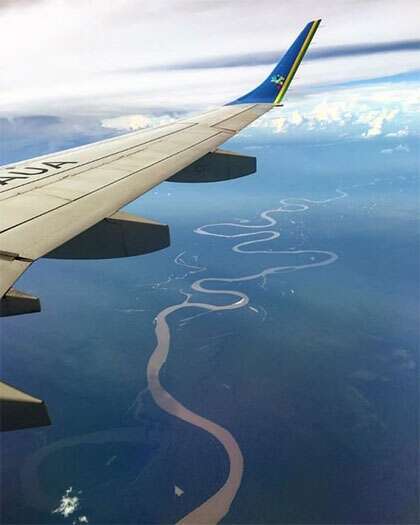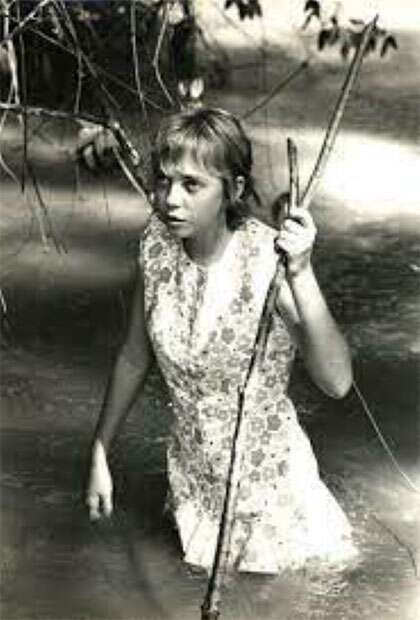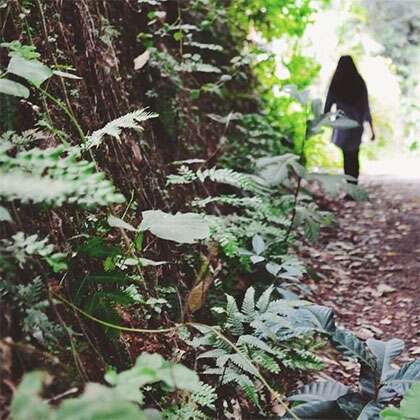On December 24, 1971, 17-year-old Juliane Koepcke boarded Líneas Aéreas Nacionales S.A. (LANSA) Flight 508 at the Jorge Chávez International Airport in Lima, Peru with her mother, Maria. She had her whole life in front of her, the two having just attended her high school graduation ball in Lima the day before, and now they were headed back to Juliane’s parents’ Panguana research station in the Amazon rainforest in a festive mood. The father had warned them not to fly with the airline as it had a poor reputation and record, but it was meant to be just a one-hour flight, so they had booked it anyway. It would be a decision they would learn to regret, and would launch one of the strangest and most inspiring tales of survival against all odds.
The flight, which carried a total of 6 crew members and 86 passengers, started normally, a totally routine flight in every sense. At one point over the vast Amazonian rainforest the aircraft encountered a patch of severe thunderstorms, which buffeted the plane with terrifying turbulence as the flickering of lightning and boom of thunder erupted around them. At this point the crew could have turned back, but the pilot decided to push through in a misguided effort to make their holiday season arrival time on schedule. This would prove to be a mistake, as the plane began to be roughly tossed around by turbulence far exceeding the norm, and soon panic was breaking out among the scared passengers. Juliane would explain of what happened:
 Suddenly we entered into a very heavy, dark cloud. My mother was anxious but I was OK, I liked flying. Ten minutes later it was obvious that something was very wrong. There was very heavy turbulence and the plane was jumping up and down, parcels and luggage were falling from the locker, there were gifts, flowers and Christmas cakes flying around the cabin. When we saw lightning around the plane, I was scared. My mother and I held hands but we were unable to speak. Other passengers began to cry and weep and scream. After about 10 minutes, I saw a very bright light on the outer engine on the left. My mother said very calmly: “That is the end, it’s all over.” Those were the last words I ever heard from her. The plane jumped down and went into a nose-dive. It was pitch black and people were screaming, then the deep roaring of the engines filled my head completely.
Suddenly we entered into a very heavy, dark cloud. My mother was anxious but I was OK, I liked flying. Ten minutes later it was obvious that something was very wrong. There was very heavy turbulence and the plane was jumping up and down, parcels and luggage were falling from the locker, there were gifts, flowers and Christmas cakes flying around the cabin. When we saw lightning around the plane, I was scared. My mother and I held hands but we were unable to speak. Other passengers began to cry and weep and scream. After about 10 minutes, I saw a very bright light on the outer engine on the left. My mother said very calmly: “That is the end, it’s all over.” Those were the last words I ever heard from her. The plane jumped down and went into a nose-dive. It was pitch black and people were screaming, then the deep roaring of the engines filled my head completely.
It would later be determined that the plane had broken up in midair after being struck by lightning to the wing. During this nose-dive, Juliane was launched completely from the plane while still strapped into her seat and with the other two seats in her row still attached, going into a freefall that would end 9,843 feet below into the uncharted and uninhabited sea of trees. She says of this harrowing plunge to what she was certain to be her doom:
Suddenly the noise stopped and I was outside the plane. I was in a freefall, strapped to my seat bench and hanging head-over-heels. The whispering of the wind was the only noise I could hear. I felt completely alone. I could see the canopy of the jungle spinning towards me. Then I lost consciousness and remember nothing of the impact. Later I learned that the plane had broken into pieces about two miles above the ground. I didn’t wake up until nine o’clock the next morning. I know this because my watch was still working. So I must have been unconscious the whole afternoon and the night. When I came to, I was alone, just me … and my row of seats.
By some miracle she survived hitting the canopy of trees and falling to the forest floor, suffering only a broken collarbone, concussion, and a gash to her right arm, which is pretty fortunate for having just fallen 2 miles from the sky. Also incredible was that she was able to disengage herself from the seat to find that she was still able to walk, and she immediately went about trying to hike around to see if there were any other survivors like herself. She soon realized that it was only her out there, and so changed her strategy to finding away out of the thick jungle, aided in the fact that her parents were biologists and she had spent much of her younger years growing up at their jungle research center, learning survival skills along the way. However, she had nothing to eat and was poorly dressed for the terrain. She says of what happened next:
 I was wearing a very short, sleeveless mini-dress and white sandals. I had lost one shoe but I kept the other because I am very short-sighted and had lost my glasses, so I used that shoe to test the ground ahead of me as I walked. Snakes are camouflaged there and they look like dry leaves. I was lucky I didn’t meet them or maybe just that I didn’t see them. I found a small creek and walked in the water because I knew it was safer. At the crash site I had found a bag of sweets. When I had finished them, I had nothing more to eat and I was very afraid of starving. It was very hot and very wet and it rained several times a day. But it was cold in the night and to be alone in that mini-dress was very difficult.
I was wearing a very short, sleeveless mini-dress and white sandals. I had lost one shoe but I kept the other because I am very short-sighted and had lost my glasses, so I used that shoe to test the ground ahead of me as I walked. Snakes are camouflaged there and they look like dry leaves. I was lucky I didn’t meet them or maybe just that I didn’t see them. I found a small creek and walked in the water because I knew it was safer. At the crash site I had found a bag of sweets. When I had finished them, I had nothing more to eat and I was very afraid of starving. It was very hot and very wet and it rained several times a day. But it was cold in the night and to be alone in that mini-dress was very difficult.
She would find a small stream and follow it, hoping to come to a larger river and hopefully civilization, but as the days passed by, she lost hope that she would ever make it out of there or even see another human face again. Her journey would last 10 days, during which time she had no more food, dodged venomous snakes and crocodiles, made makeshift rafts to avoid piranhas, and suffered from a worsening wound on her arm that had become infested with maggots. Through it all she could periodically hear aircraft buzzing around the area, rescue aircraft looking for survivors of the crash, but the trees above were so dense that she could not see them, nor could they see her. She also encountered some of the other passengers of the plane, although they were dead and rotting away in the jungle, circled by vultures. She would eventually find an old abandoned logging camp, and she says of her journey:
On the fourth day, I heard the noise of a landing king vulture which I recognised from my time at my parents’ reserve. I was afraid because I knew they only land when there is a lot of carrion and I knew it was bodies from the crash. When I turned a corner in the creek, I found a bench with three passengers rammed head first into the earth. They had landed head-first and the impact must have been so hard that they were buried almost two feet into the ground. I was paralyzed by panic. It was the first time I had seen a dead body. I thought my mother could be one of them but when I touched the corpse with a stick, I saw that the woman’s toenails were painted – my mother never polished her nails. I was immediately relieved but then felt ashamed of that thought.
By the 10th day I couldn’t stand properly and I drifted along the edge of a larger river I had found. I felt so lonely, like I was in a parallel universe far away from any human being. I thought I was hallucinating when I saw a really large boat. When I went to touch it and realized it was real, it was like an adrenaline shot. But [then I saw] there was a small path into the jungle where I found a hut with a palm leaf roof, an outboard motor and a liter of gasoline. I had a wound on my upper right arm. It was infested with maggots about one centimeter long. I had a cut on my arm and after a few days I could feel there was something in it. I took a look and a fly had laid her eggs in the hole. It was full of maggots. I was afraid I would lose my arm. I remembered our dog had the same infection and my father had put kerosene in it, so I sucked the gasoline out and put it into the wound. The pain was intense as the maggots tried to get further into the wound. I pulled out about 30 maggots and was very proud of myself. I decided to spend the night there. The next day I heard the voices of several men outside. It was like hearing the voices of angels.
The two local fishermen who found her were at first very wary of her, superstitiously thinking her to be a water goddess, but she was finally able to relay what had happened to her. They then treated her wounds and got her to civilization, where people were shocked that she had managed to survive. She would soon learn that she had been the sole survivor of the crash, and that while others, including her own mother, had survived the initial crash, they had all been immobilized and had died out in the jungle. In the meantime, there had been much investigation into what had cause the crash and it was found to be a mix of factors. Not only was Flight 508 a customized Lockheed L-188 Electra, which already had a terrible service record, but the airline had basically been barely maintaining it and slapping it together from the spare parts of other planes. The thing might as well have been held together by chewing gum and prayers. The airline also had a horrible track record. Indeed, flight 508 was found to have been LANSA’s third crash in five years.
 Another much talked about topic was how only Koepcke had survived out of 91 people aboard that plane. No one is quite sure. The main idea was that the seat she had been strapped into had saved her life, acting along with the other seats as a sort of helicopter propellor as it descended and also serving to soften the impact, which would have been helped along by the dense canopy. Whatever the reasons might be, there were many who hailed her as a miracle. Koepcke would go on to write about her story in the book When I Fell from the Sky: The True Story of One Woman’s Miraculous Survival, and there would be films made of it as well. Rather curiously, one of these films was Wings of Hope, by Werner Herzog, who rather spookily had tried to book a flight on the same plane while location scouting for his bonkers movie Aguirre, the Wrath of God, but had luckily been unable to. It is certainly an eerie coincidence.
Another much talked about topic was how only Koepcke had survived out of 91 people aboard that plane. No one is quite sure. The main idea was that the seat she had been strapped into had saved her life, acting along with the other seats as a sort of helicopter propellor as it descended and also serving to soften the impact, which would have been helped along by the dense canopy. Whatever the reasons might be, there were many who hailed her as a miracle. Koepcke would go on to write about her story in the book When I Fell from the Sky: The True Story of One Woman’s Miraculous Survival, and there would be films made of it as well. Rather curiously, one of these films was Wings of Hope, by Werner Herzog, who rather spookily had tried to book a flight on the same plane while location scouting for his bonkers movie Aguirre, the Wrath of God, but had luckily been unable to. It is certainly an eerie coincidence.
In the years after the incident, Koepcke moved to Germany and received a doctorate from Ludwig Maximilian University of Munich, before returning to Peru to do mammalogy research, primarily on bats. She now serves as librarian at the Bavarian State Collection of Zoology in Munich. Her story continues to inspire discussion and debate. How did this one lone young woman manage to escape the disaster that took so many other lives? How was she able to walk out of this and manage to be saved? Was this just luck, circumstance, perhaps the survival skills of this girl having some part to play? Or was it something more, perhaps an actual miracle? Whatever the case may be, it is all a curious and harrowing tale of survival at the very least, and still serves to inspire wonder.
by Brent Swancer
Mysterious Universe
